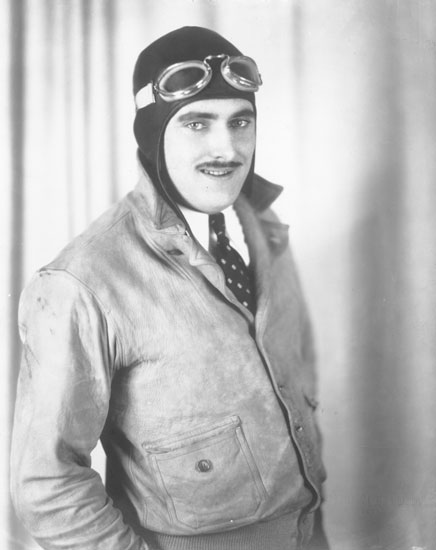
Lester Dent was an author of the thirties and forties. He is best know for 159 Doc Savage novels published under the house name of his publisher, Kenneth Robeson. He wrote those novels in sixteen years from 1932 to 1948 and was initially paid $500 a piece for them. Later the compensation was increased to $750. For comparison, using CPI $500 in 1932 is equivalent to $9277.45 today. Those novels were not all Dent wrote and his book, Honey in His Mouth was published in 2012 by Hardcase Crime to a great deal of acclaim. His Lester Dent formula is still recommended as a good outline for starting writers. Even Michael Moorcock has recommended it.

Donna Tartt is an American novelist. Her most recent novel, Tee Gee appear in 2013. It had two predecessors, The Secret History, her first novel published in 1992, and The Little Friend, published in 2002. She has also had a handful of short stories published. Ms. Tartt won a variety of awards: the WH Smith Literary Award, the Pulitzer Prize, and The Andrew Carnegie Medal for Excellence in Fiction. She is a well-respected author.
I write about Mr. Dent and Ms. Tartt because they represent the two extreme ends of the writing profession. They are iconic of a choice an author has to make when he starts out. It is a relatively new choice for authors today. For much of my life, Ms. Tartt’s path was more representative of what genre writers’ choices than they were in Mr. Dent’s era. With the rise of indie publishing, first with Amazon Kindle and now with additional services such as Kobo and iBooks, more of the Dent era has returned.
The paths are the high literary author who takes years to craft one novel. While Ms. Tartt, with her decade per novel, is the extreme end others such as Wally Lamb with five years per book including non-fiction (five for novels only) and Anne Lamott with four years per book including non-fiction are also examples. Genre writers used to be closer to Dent. Over fifty years Lawrence Block has over 100 books, but knowing he cut his teeth writing softcore porn and had many books published under other names, the count is probably higher. In the 1980s and 1990s, however, genre authors were held to one book per year by their publisher. To make living genre writers often worked series with different publishers or several pen names, either at one publisher or several.
I tend to refer to the two categories as white-collar and blue-collar writers. One works at a leisurely pace that could be considered an air-conditioned writer’s room. The other toils to make their 2,000 plus words per needed to keep up their multiple books per year pace. One thing that was true up to the 1990s is genre novels were shorter. I miss those 200 to 250-page paperbacks that sat in the 60,000 to 80,000-word range more than the doorstops modern publishers demand.
I write this to point out the kind of writer I see myself as. I am a blue-collar pulp writer. I want to turn out fun stories that people enjoy. They may not produce much interest after I’m dead, but that’s fine. Channeling Robert Heinlein I see myself, in terms of writing as a profession, as offering to tell a thrilling yarn in exchange for your beer money. That is much more the domain of Dent, Block, or Andre Norton than it is Ms. Tartt.
This is not to say I think worse of the white-collar authors. I admit to not having read any of Ms. Tartt’s novels, although The Secret History is in the queue. I have read one of Mr. Lamb’s novels, She’s Come Undone. Ms. Lamott’s book on writing Bird by Bird is one of the two most influential on my writing to date. The other is Block’s The Novel from Plot to Print (now adding to pixels). I have no illusions that the white-collar, literary writer has nothing to say to the blue-collar genre writer, anymore than in my day job I think a forty-years in the job COBOL programmer has nothing to teach me as a twenty-year in Perl programmer. I also do not think I have nothing to learn from a five-years in Python programmer. Perhaps not as much from the latter, but that is more the level of experience than the type of experience issue.
I do think our worlds are diverging more in professional terms even if they are not in craft. Indie publishing, as I said, is bringing back the world of the pulps. Kristine Kathryn Rusch points out you can make bestseller money in indie on midlist sales. Chris Fox is pointing out the need to go no more than eight, eight, weeks between releases if you want to succeed in making six figures. I would not be surprised if by the time I retire to writing as a full time job (target date, May 10, 2026) that traditional publishing is solely the realm of literary writers like Ms. Tartt while the genre writer heirs of Mr. Dent are all doing independent ebooks and print on demand.
I am okay with that. My first adult job was as an enlisted sailor, which is blue collar toil. Then I worked a factory in college. After college I have been a computer programmer with a blue collar run in restaurant management as an intermission.
It is time to get back to toiling in the salt mines.
:




[…] is reluctant to publish more than one book per author per year, it isn’t historically. Lester Dent wrote two unique novels a month most months for years. Of course, those were at the lower end of the novel range, closer to […]
[…] Lester Dent was a great author of the pulp era. His first published story in September 1929. His last published novel was in February 1959, the month he died. I am not sure how many novels and stories he published in those twenty-nine years and change. I do know he wrote 161 Doc Savage novels for the pulp magazine of the same name between 1933 and 1949. These novels were in the 40,000-word range. That means his Doc Savage output alone in that period was over 425,000 words per year. He is the epitome of the blue-collar pulp writer. […]